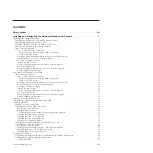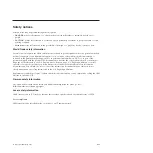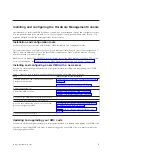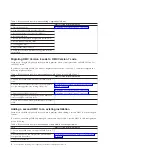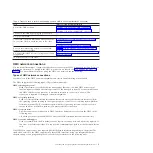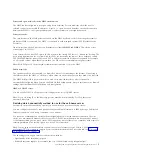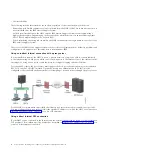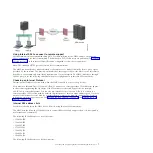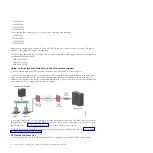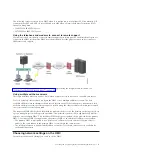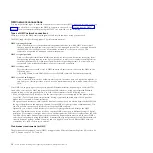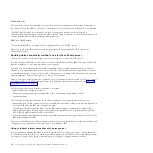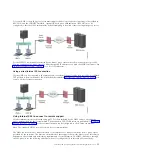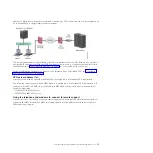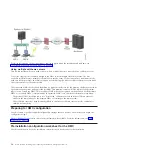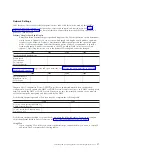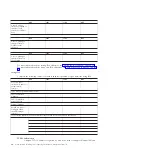
Private and open networks in the HMC environment:
The HMC can be configured to use open and private networks. Private networks allow the use of a
selected range of nonroutable IP-addresses. A
public
, or "open" network describes a network connection
between the HMC to any logical partitions and to other systems on your regular network.
Private networks
The only devices on the HMC private network are the HMC itself and each of the managed systems to
which that HMC is connected. The HMC is connected to each managed system's FSP (Flexible Service
Processor).
On most systems, the FSP provides two Ethernet ports labeled
HMC1
and
HMC2
. This allows you to
connect up to two HMCs.
Some systems have a dual-FSP option. In this situation, the second FSP acts as a "redundant" backup. The
basic setup requirements for a system with two FSPs are essentially the same as those without a second
FSP. The HMC must be connected to each FSP, so additional network hardware is required (for example,
a LAN switch or hub) when there is more than one FSP or there are multiple managed systems.
Note:
Each FSP port on the managed system must be connected to only one HMC.
Public networks
The open network can be connected to a firewall or router for connecting to the Internet. Connecting to
the Internet allows the HMC to "call home" when there are any hardware errors that need to be reported.
The HMC itself provides its own firewall on each of its network interfaces. A basic firewall is
automatically configured when you run the HMC Guided Setup wizard, but you customize your firewall
settings after the initial HMC installation and configuration.
HMC as a DHCP server:
You can use the HMC as a Dynamic Host Configuration Protocol (DHCP) server.
Note:
If you are using IPv6, the discovery process must be done manually. For IPv6, there is no
automatic discovery.
Deciding which connectivity method to use for the call-home server
Learn more about the connectivity options you have when you use the call-home server.
You can configure the HMC to send hardware service related information to IBM by using a LAN-based
Internet connection, or a dial-up connection over a modem.
You have two communication choices when configuring the LAN based Internet connection. The first
choice is to use standard Secure Sockets Layer (SSL). The SSL communication can be enabled to connect
to the Internet through your proxy server. SSL connectivity is more likely to be compliant with corporate
security guidelines. Your second option is to use a VPN connection.
Note:
If your open network interface connection uses only Internet Protocol Version 6 (IPv6), you cannot
use Internet VPN to connect to support. For more information about the Protocols used, see “Choosing
an Internet Protocol” on page 7.
The advantages to using an Internet connection can include:
v
Significantly faster transmission speed
v
Reduced customer expense (for example, the cost of a dedicated analog telephone line)
Installing and configuring the Hardware Management Console
5
Содержание Hardware Management Console
Страница 1: ...Power Systems Installing and configuring the Hardware Management Console...
Страница 2: ......
Страница 3: ...Power Systems Installing and configuring the Hardware Management Console...
Страница 8: ...vi Power Systems Installing and configuring the Hardware Management Console...
Страница 107: ......
Страница 108: ...Printed in USA...

